Professional Writing
|
Essay
What’s the DNA of your Prototype?
How my Black Mirror experience with American Airlines led to a reflection on company values
Topics
prototyping
customer experience
travel
Started: Wed Aug 08 2018
Last updated: Mon Jun 20 2022
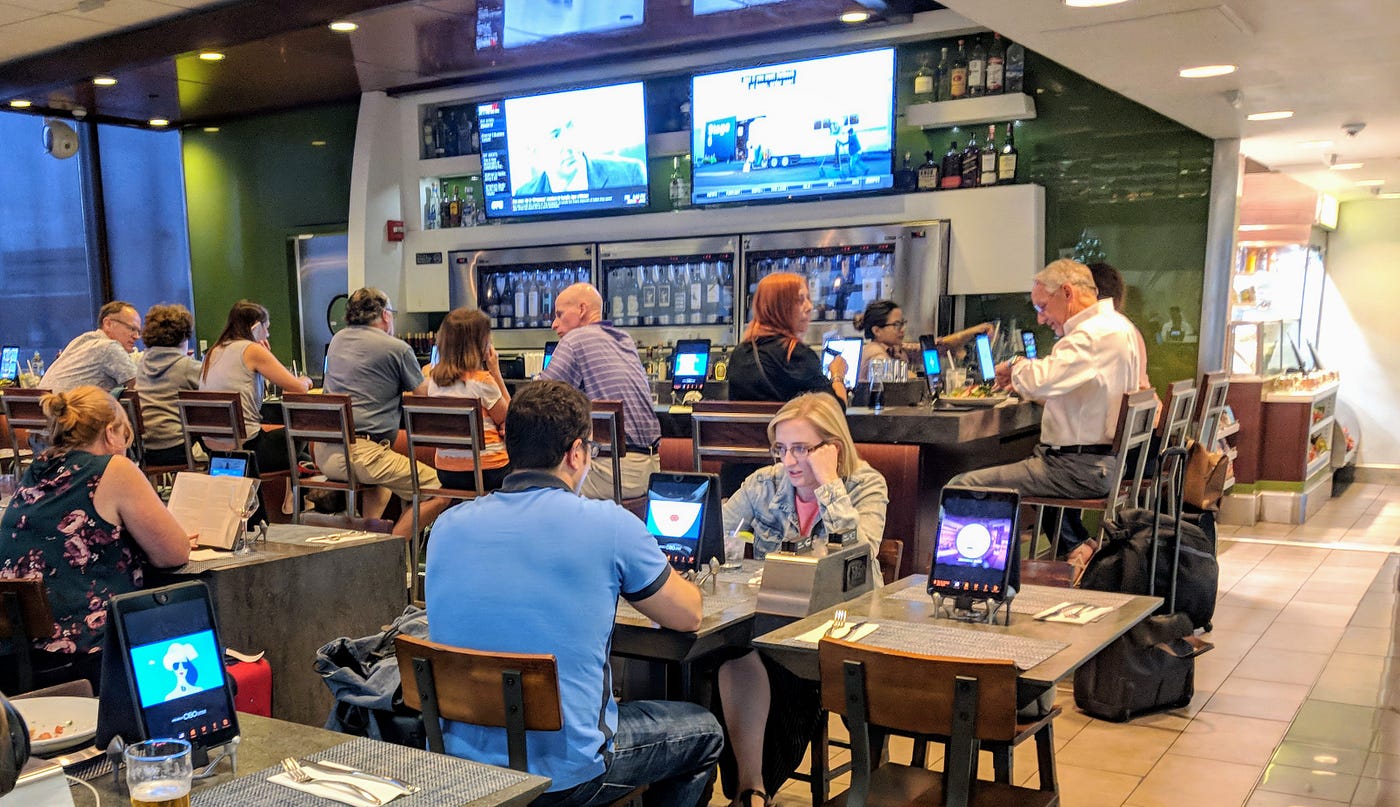
My colleagues and I are big fans of Southwest Airlines. They approach their airline with kindness, empathy, and a bit of whimsy. On our last travel experience though, that experience didn’t hold up. Instead, upon waking up to a cancelled flight, we experienced terrible customer support, an absence of service recovery, and a general lack of empathy for our situation.
Our day started out with a cancelled flight from Baltimore, along with a lack of effort to make it right, and an eventual rebooking and last-minute Greyhound to Philadelphia. After a bus ride to Philly, our now 2nd reservation attempt was cancelled. For our third attempt, the rep made a mistake which gave away our seats and forced us to rebook for the next day. Throughout all this, service recovery was nonexistent. When all was said and done, we were livid, frustrated, and after only about three hours of sleep the night before, exhausted. We decided enough was enough, left Southwest, and booked a flight on American Airlines.
As we made it through security, we noticed that something was different about American Airline’s “Terminal B” at the Philly airport. The shops were still there, the gates were still there, and it was still busy, but looking off to the right, we noticed a room with workstations and iPads. My colleague and I, gazing upon that area, found excitement in the prospect of a work area as we prepared to wait over three hours for our flight.
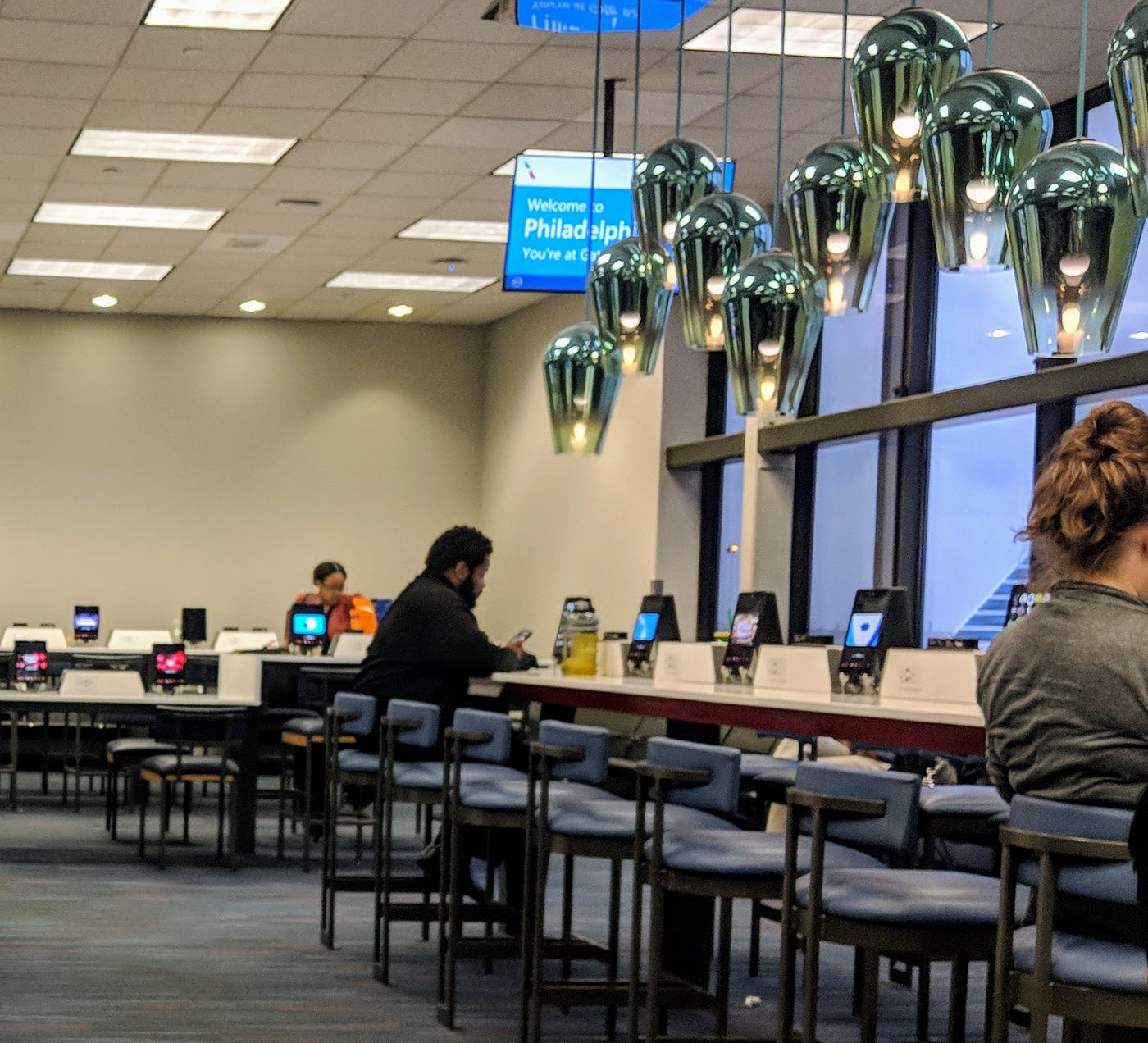
Walking into the “work area,” we were greeted by a large cache of iPads, bright and artful lighting, and a general feeling of cleanliness and elegance. This was new and exciting, and we realized that American Airlines had created an idea for an experience and was testing the best way to bring this idea to life.***
It felt like American Airlines was trying to disrupt other airlines, such as Southwest, that compete on the experience they provide travelers.
By creating a gate-to-gate travel experience, they had the potential to move the competition from the plane to the gate. They were exploring the possibility of disrupting the industry by creating an amazing experience that alleviated the stressors of waiting for the plane… redesigning the gate experience to focus on the customer.
In experience design, we consider a coherent experience to be defined by the use of continua — essentially experience guidelines that should be evident throughout the entire customer journey. This gate experience was the perfect embodiment of how to implement continua. Everything felt coherent, fluid, and designed — designed to solve problems.
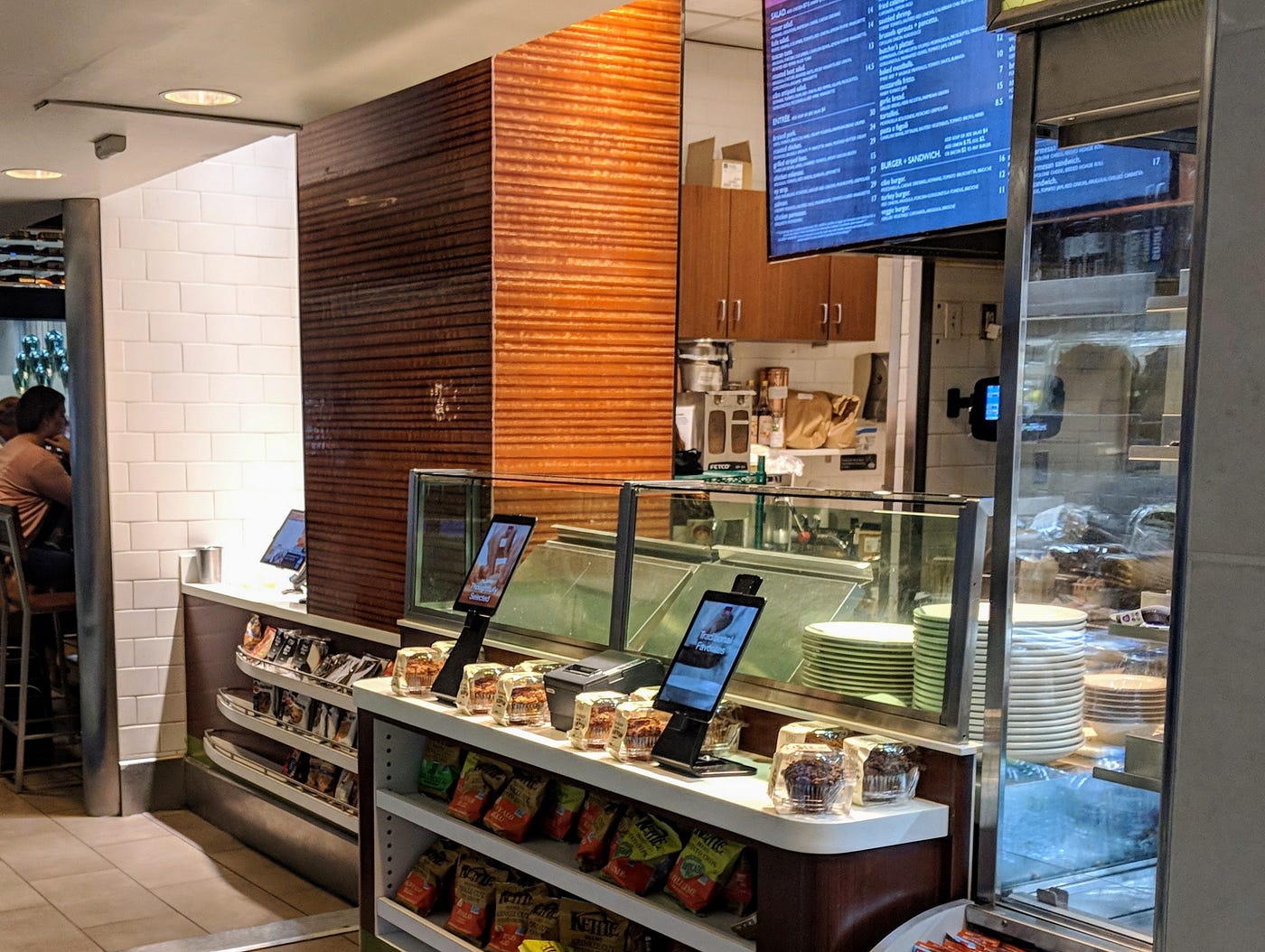
After hanging out in this first, nearly empty, gate area (“work area”) for a bit, we ventured closer to our gate. We weren’t prepared for what we were about to experience. As we passed a series of gates, dining areas, and concessions, we were blasted with literally hundreds of iPads that were all blinking, flashing, and vying for our attention. Subtle bass music was just barely audible throughout the entire concourse. Areas such as gates and restaurants were defined not by walls, but by differences in lighting, architecture, and decorations. The visual style seemed to flow from one area to another, and individuals were subconsciously invited to experience the tastes and products offered by these areas.
This wasn’t the only way to experience the dining options though, as one could also use their iPad to order food and drinks that would be brought directly to their seat anywhere in the concourse — no human interaction necessary. These iPads also linked directly to the passenger using it to display personalized flight information and facilitate flight changes.
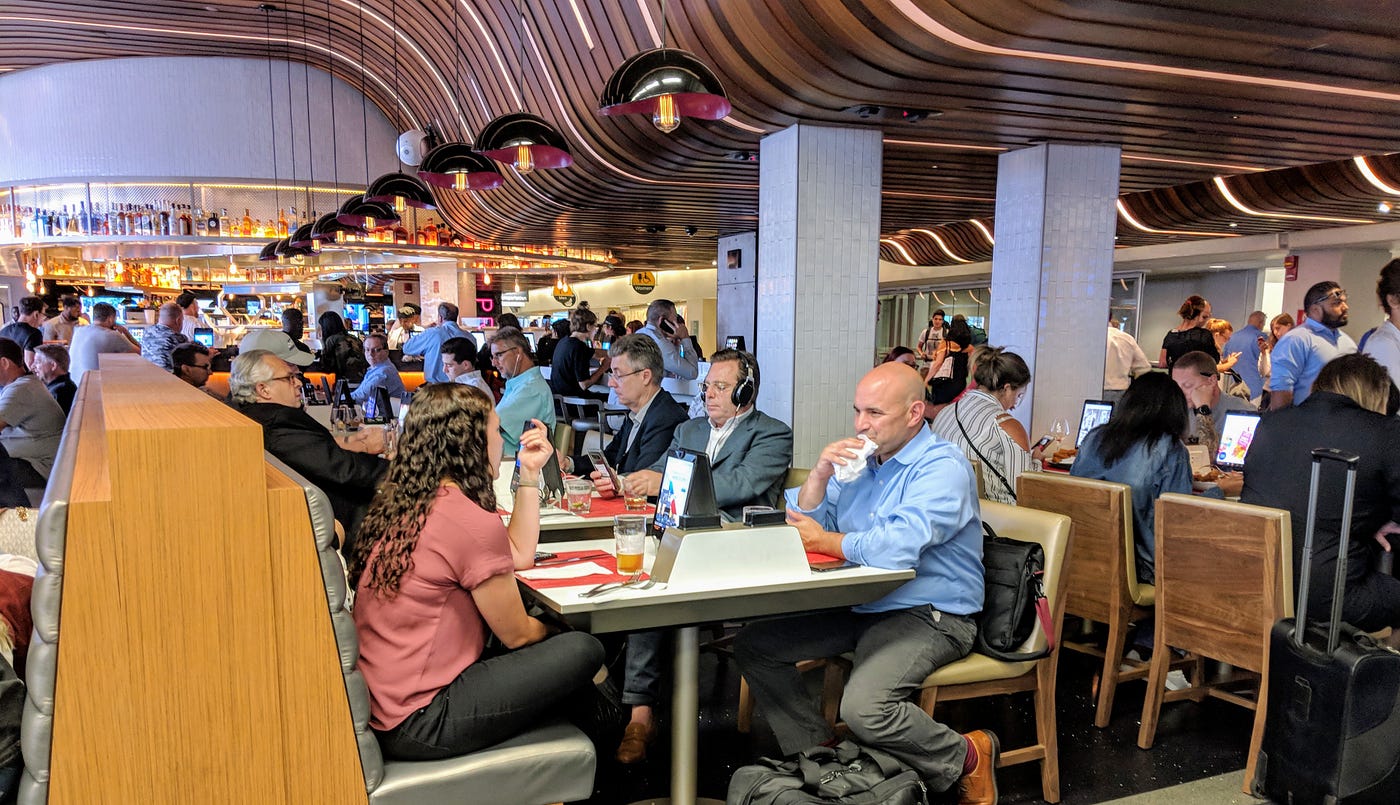
If we are being honest, this all felt a little “Black Mirror”-ish. Some individuals had two, three, or even four screens sitting in front of them. Families were sitting together, but they weren’t interacting with each other. Every person was in their own little bubble, with their iPad, laptop, cellphone, and noise-cancelling headphones; saving them from contact with the rest of humanity — their fellow passengers, the people making their food and drinks, and the gate agents who would normally help with flight issues.
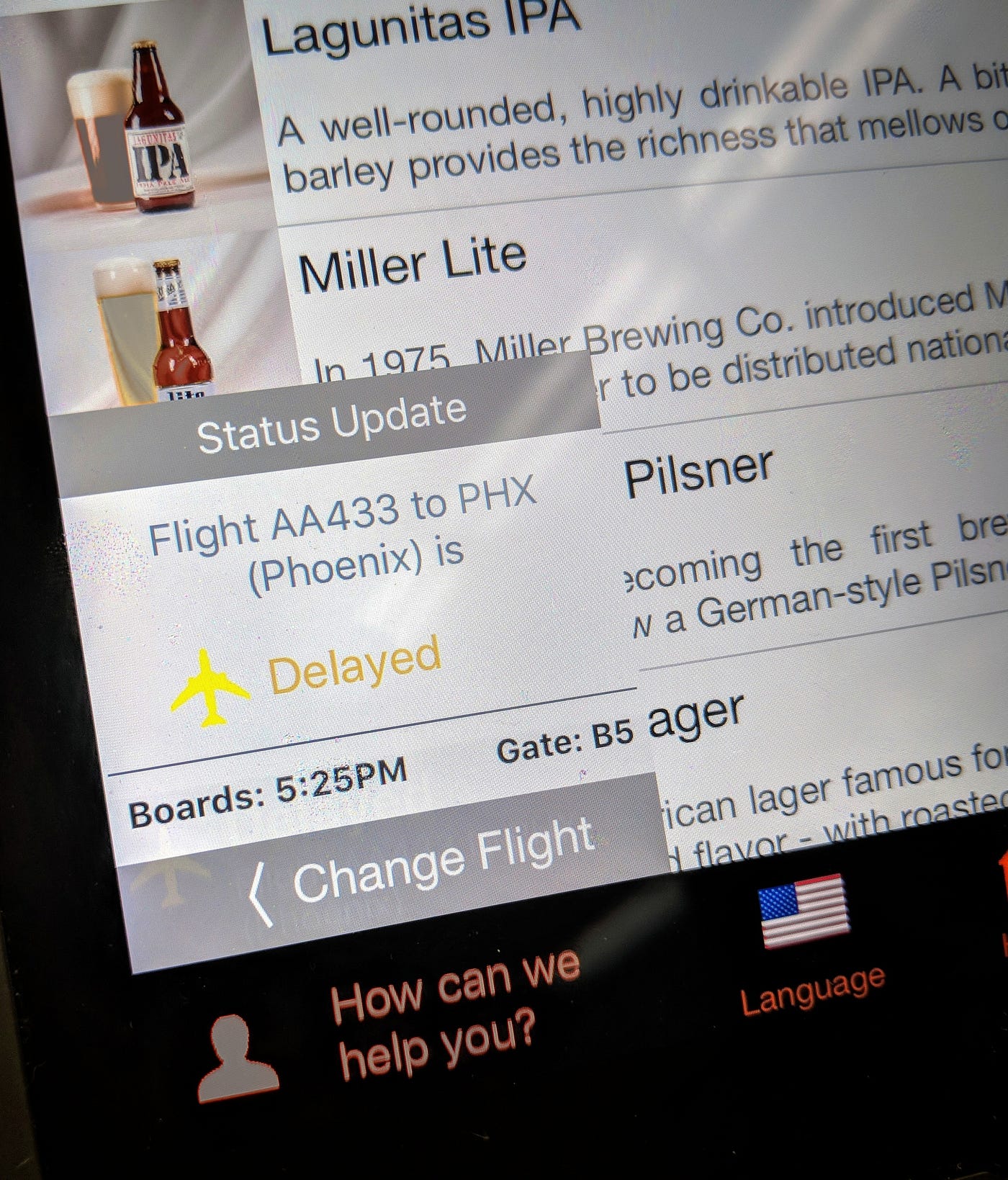
The iPads link to each ticket, along with the pertinent flight info and options for support. Right next to $7.50 bottles of Bud Light.
If we were to put this experience in the context of the problem they were solving for, it began to feel obvious that instead of being designed to solve problems for the customer, it was designed to solve for the problems facing the airport and the airline. If there was an opportunity to make money, they implemented it — teasers were being shown on rotation for restaurants in the concourse, it was effortless to order a $7.50 bottle of Bud Light or a $30 pork chop, and ads were shown when trying to access parts of the iPad, such as a 10 second pre-roll before loading a basic web browser with the standard USA Today website. The three big buttons on these iPads read: “Play, Dine, Eat.” Everywhere you looked, people were consuming and spending, controlling their own personal reality with a touch of their finger. Meanwhile, the typical local businesses that exist in a concourse were nowhere to be seen.**
To put this in the context of continua*, experience threads such as seclusion and consumption began to overshadow those of empowerment and fluidity. The problem that the designers had solved for was less about how to make things more relaxing for the traveler, but instead how to distract them through consumption and isolation.
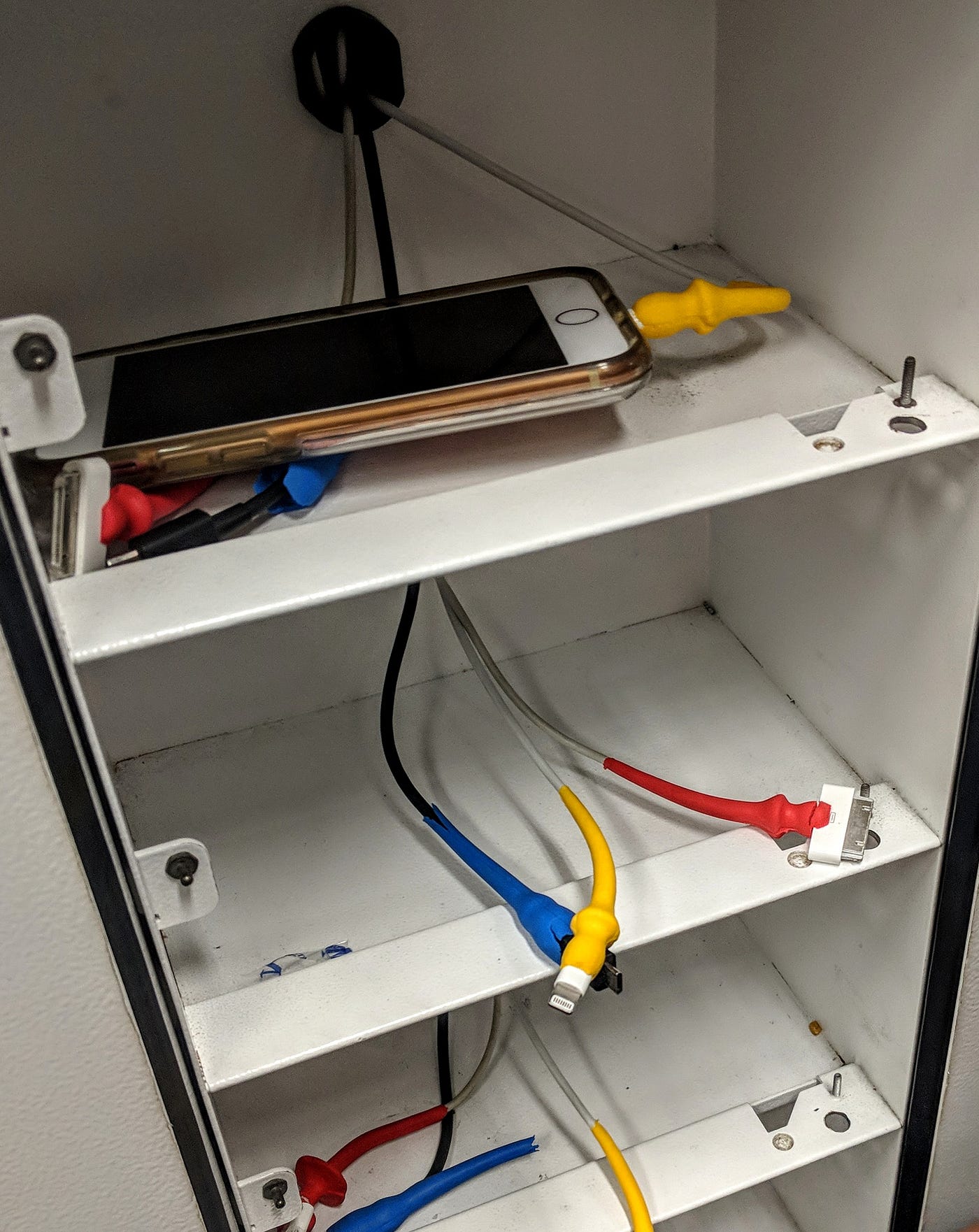
Since the concourse was basically a big prototype, there were lots of small touches I found interesting. For example, these charging cords are wrapped with colorful Sugru. Hopefully, as American Airlines continues to test the prototype, they will continue to refine the best ideas and drop the ideas that don’t add to the experience for travelers.
I don’t think this test is a failure though. This was a successful implementation of an experience in many ways, it was just focusing on the wrong problem. Certainly, for an experience strategist like myself, it represented the holy grail of testing and prototyping. That said, in my own opinion, they lost focus of the customer and failed to build empathy into the experience. They focused on distracting passengers from the stressors that plague travel, not solving for them. Problems such as crowded boarding areas were not addressed, with people spilling into the main walkway just as much as normal. By the time our three hours of waiting had passed, I was on edge and ready for a break from this constant stimulation.
As we descended the ramp out of the gate area, I noticed the noise and music began to fade away. In the silence, I realized, the transition from the gate to the plane presented up an experience of it’s own: leaving a Vegas casino after a long night of indulgence. The lights, the sounds, the digital screens, the entire experience — at its core, it was exactly the same — designed to capture someone in the environment built by a corporation that wants to open the pocketbooks of customers.
As we passed through the curtain that segregated us economy class plebes from the business class elites, we heard a passenger mention to the flight attendant that he was trying to get to his bag from the overhead bin a few rows up. Her response? “Okay, but you’re swimming upstream, and I can’t stop boarding. Sooo…..” As her words trailed off, my colleague and I looked at each other and let out a brief laugh. As revolutionary as the experience in the gate was, at the end of the day, it reflected the DNA of American Airlines. A DNA built on dollars, upgrades, and experiences linked to one’s ability to pay.
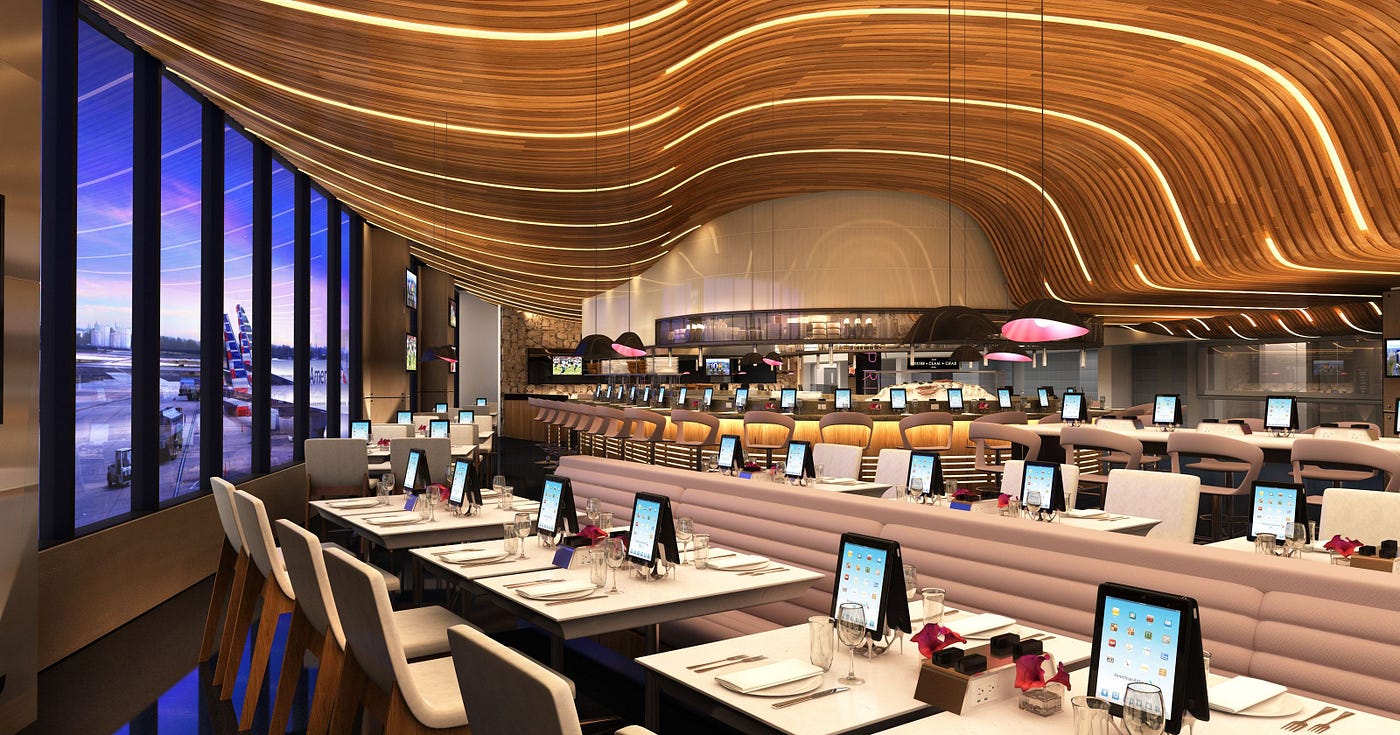
For me, the takeaway of this experience helped solidify the reason why Southwest is so appealing in the first place. They focus on the customer and build empathy into every interaction. They have room to improve, for example, situations like our experience that morning should never happen again. In the end though, they’ve created a brand in which people expect to be taken care of and have mistakes made right. For the majority of the “big” airlines, this isn’t the case. A sub-par service experience is expected and a lack of service recovery is the norm. For these airlines, the amount of money that can be gained from a passenger is more important than the amount of empathy that can be built with them.
A core continuum of the Southwest brand experience is empathy*, and it’s built into the company’s DNA from the very beginning. Who knows, after a few more experiences like today, I may throw in the towel and build a relationship with a more traditional airline, but until that happens, Southwest will, in my book, remain the perfect embodiment of an experience — rooted in making things easier for the customer, not simply fulfilling business objectives.
You see, airlines are not just providing a product or service, or even just an experience. Instead, airlines revolve around facilitating connections — getting consultants to their client meetings on time, reconnecting loved ones with their families, and getting a weary parent home to their spouse and children. At the end of the day, the airline industry is a conduit for connection, not simply transportation.
For an airline like American, it’s critical that they understand this and exhibit a level of empathy that embodies these values. It goes to show that the bedrock of a strong customer experience is so much more than the sum of it’s parts, it’s instead a reflection of the very core of the company and how they value their relationship with customers.
*_ When referencing these example continua, I’m going off my own perceptions, not the original intent of the designers. When Cast & Hue works to develop continua, it takes several weeks of intense strategic analysis based on customer feedback._
** While originally stating that local food was not present, the restaurants were, in fact, all ran by local chefs. The decor and experience didn’t differentiate these restaurants much though, probably a result of being operated by the same hospitality company (OTG).
*** For more information about the Philadelphia terminal B remodel, take a look at this article in the Philadelphia Business Journal: https://www.bizjournals.com/philadelphia/morning_roundup/2016/05/phl-international-airport-otg-american-sbraga-ipad.html